Exploring Cuba and the Dominican Republic: A Comparative Journey Through Culture, Economy, Politics, and Beyond

The allure of the Caribbean lies not only in its pristine beaches and inviting waters but also in the rich historical tapestry that each island nation weaves. Cuba and the Dominican Republic are two distinct gems, each boasting unique historical, cultural, and geographical significance. To truly appreciate their charm and complexity, it’s essential to delve into their pasts and understand the connections that bind them.
Historical Background:
Cuba:
In the pre-colonial era, Cuba was inhabited by indigenous populations, contributing to a vibrant tapestry of cultures. However, the course of Cuban history changed dramatically with Spanish colonization. This colonial era left an indelible impact, shaping the island’s architecture, language, and traditions. Fast-forward to the 20th century, and Cuba became synonymous with the Cuban Revolution led by Fidel Castro. The aftermath of this revolution saw Cuba transition into a socialist state, reshaping its socio-economic and political landscape.
Dominican Republic:
The Dominican Republic’s history also unfolds with the Taino civilization and early cultural influences. Spanish colonization led to the emergence of Santo Domingo, the oldest continuously inhabited European settlement in the Americas. A pivotal moment arrived during the Trujillo era, marked by authoritarian rule and its far-reaching implications. This period underscores the interconnectedness of power, politics, and identity in the Dominican Republic.
Understanding the Significance:
Gaining insight into the historical trajectories of Cuba and the Dominican Republic offers more than just a glimpse into their pasts; it provides a lens through which to examine the present. We can better appreciate emerging societies by comprehending the legacies of colonization, revolutions, and transitions. Moreover, studying the intricate parallels and deviations between these two nations opens doors to understanding broader themes like governance, socio-economic shifts, and cultural preservation.
In the upcoming sections, we will look more in-depth at the geographical features, cultural heritage, and current dynamics of Cuba and the Dominican Republic. Our exploration will highlight their shared attributes and the nuanced distinctions that make each destination a compelling story to unravel.
Cultural Landscapes: Enriching Experiences in Cuba and the Dominican Republic
As we continue our journey through the vibrant tapestries of Cuba and the Dominican Republic, we now immerse ourselves in their captivating cultural landscapes. These nations boast breathtaking scenery and a rich music, literature, arts, and spiritual heritage. Join us as we explore the resonating melodies, literary legacies, and religious traditions that shape the identities of Cuba and the Dominican Republic.
Cuba:
Harmonious Melodies and Artistic Expressions: Cuban music is a cornerstone of the nation’s cultural identity, with genres like Son and Bolero capturing the hearts of locals and global audiences alike. The remarkable collaboration of talented musicians, the Buena Vista Social Club phenomenon, catapulted these musical forms onto the international stage. The soul-stirring rhythms and heartfelt lyrics of Son and Bolero evoke a sense of nostalgia, intertwining Cuba’s past and present through melodies that transcend borders.
A Canvas of Words and Imagination: Cuba’s literary and artistic heritage is embodied in figures like José Martí and Alejo Carpentier. Martí, a celebrated poet and essayist, advocated for Cuban independence and cultivated a profound sense of national identity. Carpentier, a literary pioneer, wove magical realism into his works, enriching Cuban literature with a unique fusion of reality and the extraordinary. Their contributions inspire generations, igniting a passion for creativity and self-expression.
Spirituality Rooted in Tradition: Religion in Cuba originates in Santería, a syncretic blend of Yoruba traditions from West Africa and Catholicism. This unique fusion showcases the resilience of African culture in the face of colonial influence. Santería’s intricate rituals, vibrant ceremonies, and connection to the divine serve as a testament to preserving heritage and spirituality amid historical challenges.
Dominican Republic:
Rhythms that Resonate: The Dominican Republic pulses with the energy of Merengue and Bachata, two musical genres deeply ingrained in the nation’s fabric. Merengue’s lively beats and infectious melodies echo the joy of Dominican celebrations, while Bachata’s emotive tunes explore themes of love and heartache. These genres are more than just music; they are expressions of the Dominican spirit and the rhythm of daily life.
Ink and Inspiration: Literary luminaries like Julia de Burgos and Juan Bosch have left an indelible mark on Dominican arts and letters. Julia de Burgos’s poetry, imbued with themes of feminism and social justice, resonates with readers seeking empowerment and change. Juan Bosch, a multifaceted intellectual, explored the complexities of Dominican society through his stories, essays, and political engagement, leaving a legacy that continues to shape national discourse.
A Fusion of Faiths: Religion in the Dominican Republic reflects a harmonious blend of syncretism and Catholicism. This fusion is a testament to the cultural intersections that have shaped the nation. The syncretic traditions of Vodou and African spiritual practices coexist alongside Catholicism, exemplifying the resilience of faith and the multifaceted nature of Dominican spirituality.
As we unravel the cultural landscapes of Cuba and the Dominican Republic, we witness the threads that weave together their histories, beliefs, and artistic expressions. Join us in the next instalment as we delve into the geographical wonders that enhance the allure of these captivating destinations.
Economic Structures and Challenges: Navigating Diverse Landscapes
The journey through Cuba and the Dominican Republic extends beyond their cultural riches, encompassing intricate economic structures and political systems. As we delve into these facets, we gain insights into these nations’ challenges and strategies for navigating complex landscapes.
Cuba:
The Socialist Framework and Its Impact: Cuba’s economic structure is rooted in socialism, with state ownership and central planning playing pivotal roles.
This strategy has resulted in notable accomplishments in fields such as healthcare and education, influencing the overall welfare of its population. However, it has also posed challenges, such as limited private enterprise and fluctuations in resource allocation, impacting the overall economic landscape.
Tourism: The Double-Edged Sword: Tourism has emerged as a vital lifeline for the Cuban economy, drawing travellers with its rich culture and picturesque landscapes. Despite its economic benefits, the reliance on tourism has created vulnerabilities, exposing the economy to fluctuations in global travel trends. The U.S. embargo further compounds the economic challenges, constraining Cuba’s access to international markets.
Dominican Republic:
Tourism as an Economic Engine: In the Dominican Republic, the role of tourism, particularly in Punta Cana, extends beyond economic benefits. It has transformed the region into a thriving destination, stimulating job creation and infrastructure development. While the tourism boom has bolstered the economy, diversification remains essential to mitigate risks associated with over-reliance on a single industry.
Agriculture: A Legacy and Potential: Agriculture holds historical significance in the Dominican Republic, with crops like sugar, coffee, and cacao shaping its identity. Despite its potential, challenges such as fluctuating global commodity prices and climate-related uncertainties underscore the need for innovation and sustainable practices to ensure the sector’s resilience.
Free Trade Zones: Opportunities and Considerations: Establishing free trade zones has been instrumental in both nations, fostering economic growth and attracting foreign investment. In Cuba, these zones signal a shift toward economic liberalization, while in the Dominican Republic, they have played a role in the nation’s export-oriented growth strategy. Balancing economic benefits with fair labour practices remains crucial in these zones.
Political Systems and Governance: Navigating Pathways of Power
Cuba:
The One-Party System: Dynamics and Evolution: Cuba’s political landscape is characterized by a one-party system. This system has evolved, adapting to changing circumstances while maintaining a centralized authority. Recent reforms reflect an openness to economic changes while preserving the core tenets of socialist governance.
Global Relations and Diplomacy: Cuba’s relationship with the U.S. has been marked by complexities, including the U.S. embargo that has endured for decades. The nation’s interactions with the rest of the world reflect a commitment to sovereignty and self-determination, shaping its international stance.
Dominican Republic:
Pursuit of Democratic Ideals: The Dominican Republic has witnessed transitions from authoritarian rule to democratic governance. This journey has been challenging as the nation navigates transparency, accountability, and political participation issues. These transitions underscore the resilience of Dominican democracy.
Political Parties and Shaping the Future: Political parties are crucial in governing the Dominican Republic. Prominent figures and parties have significantly influenced the country’s policies and trajectory. While the democratic process thrives, addressing corruption and ensuring representation remain ongoing priorities.
Neighbours and Partnerships: The Haiti Connection: The Dominican Republic’s relationship with neighbouring Haiti is complex and multifaceted. Addressing historical tensions and fostering collaboration remains crucial for regional stability and progress.
As we explore Cuba and the Dominican Republic, we’ll delve into the contemporary dynamics that define their present realities. Stay tuned for Part 5, where we’ll uncover the challenges and opportunities these nations embrace on their journey towards a promising future.
Social Dynamics and Challenges: Weaving the Fabric of Society
The stories of Cuba and the Dominican Republic extend far beyond their landscapes and economic structures. They are etched in the lives of their people, reflecting social dynamics that shape the very essence of these nations. This chapter unveils the tapestry of education, migration, and societal issues that define Cuba and the Dominican Republic.
Cuba:
Nurturing Minds and Health: Cuba’s commitment to education and healthcare is evident in systems prioritizing all access. Universal education and a robust healthcare system have yielded commendable outcomes, resulting in high literacy rates and improved health indicators. This investment in human capital shaped the foundation of Cuban society.
Waves of Emigration: Stories of Departure: Emigration from Cuba has been a recurring phenomenon, driven by many reasons, including economic challenges and aspirations for a different life. This has led to diasporic communities maintaining connections to their homeland while contributing to the global migration narrative.
Balancing Freedom and Constraint: Cuba’s social fabric is woven with freedoms and constraints. While citizens enjoy access to healthcare and education, certain social freedoms are regulated. The interplay between state control and individual expression creates a unique societal dynamic.
Dominican Republic:
Bridging Gaps in Education and Health: Education and healthcare disparities persist in the Dominican Republic, especially in rural and marginalized communities. Efforts to bridge these gaps are crucial for ensuring equitable opportunities for all, and progress is being made toward improving access to quality education and healthcare.
Dreams and Departures: Migration to the U.S.: Migration, particularly to the United States, has shaped the Dominican Republic’s social landscape. While some seek economic opportunities, others pursue the promise of a better life. This movement reflects aspirations and challenges in pursuing a brighter future.
Striving for Equality and Addressing Poverty: Gender equality and poverty are vital social issues in the Dominican Republic. Initiatives and conversations around gender parity and poverty reduction significantly shape the nation’s social progress. These efforts underscore the importance of inclusivity and shared prosperity.
Environmental Concerns and Conservation: Safeguarding Nature’s Treasures
Cuba:
Preserving Biodiversity in Protected Areas: Cuba boasts a rich tapestry of biodiversity nurtured within its protected areas. These regions are essential for safeguarding unique species and maintaining ecosystems contributing to the island’s natural splendour.
Tourism’s Footprint on Ecosystems: While tourism bolsters the economy, its impact on Cuba’s ecosystems is a matter of concern. Sustainable practices are vital to mitigate potential negative effects and ensure that the island’s natural wonders remain intact for future generations.
Confronting Climate Change: A Shared Challenge: Climate change poses a global threat, and Cuba is not immune to its impacts. Rising sea levels and extreme weather events necessitate collaborative efforts to adapt and mitigate the effects of a changing climate.
Dominican Republic:
Deforestation: A Growing Concern: Deforestation in the Dominican Republic poses serious ecological and social consequences. Addressing this issue requires balancing economic development and preserving forests integral to the nation’s ecological stability.
Shores Under Siege: Coastal Conservation Imperative: The Dominican Republic’s coastal areas face erosion and habitat degradation challenges. Conservation efforts are crucial to protect these vital ecosystems, ensuring the sustainability of both marine life and coastal communities.
Towards Sustainable Tourism: A Step Forward: As tourism flourishes, the Dominican Republic is adopting sustainable practices to minimize its environmental impact. Responsible tourism initiatives are vital for balancing economic growth and environmental stewardship.
As we approach the culmination of our exploration, we’ll unravel the narratives of resilience and aspirations that define the futures of Cuba and the Dominican Republic. Join us in Part 7, where we’ll conclude our journey by reflecting on the shared hopes and distinctive paths that lie ahead for these remarkable nations.
Conclusion: Embracing Shared Bonds and Future Horizons
In our voyage through the landscapes of Cuba and the Dominican Republic, we have uncovered not just destinations but interconnected stories of resilience, diversity, and aspirations. As we draw our journey to a close, let’s reflect on the profound lessons and shared Caribbean identity that unite these two nations.
United by a Caribbean Tapestry: Cuba and the Dominican Republic are a testament to the Caribbean’s cultural mosaic, where diverse influences have converged to shape their identities. While each nation has a distinct character, they are bound by a shared legacy that weaves indigenous roots, colonial histories, and vibrant modern expressions.
Collaboration in the Face of Global Challenges: Cuba and the Dominican Republic’s challenges extend far beyond their shores. Climate change, economic shifts, and social transformations are global issues that require collaboration and collective action. In recognizing their shared vulnerabilities, these nations can lead the way in forging partnerships that transcend borders.
Embracing the Diversity of Culture and Heritage: As we bid farewell to our exploration, a call to appreciate the richness of cultures, histories, and futures emerges. The harmonious melodies, captivating literature, and dynamic societies of Cuba and the Dominican Republic reflect the intricacies of humanity’s collective experience. We foster a world of unity amidst diversity through understanding and celebrating these differences.
Our journey through Cuba and the Dominican Republic unveils the tangible beauty of their landscapes and the intangible essence that defines their people. These nations beckon us to explore further, to delve deeper into their stories, and to continue the dialogue of mutual respect and understanding. As we depart from our voyage, let us carry the lessons of connection, collaboration, and celebration that these remarkable destinations have shared.


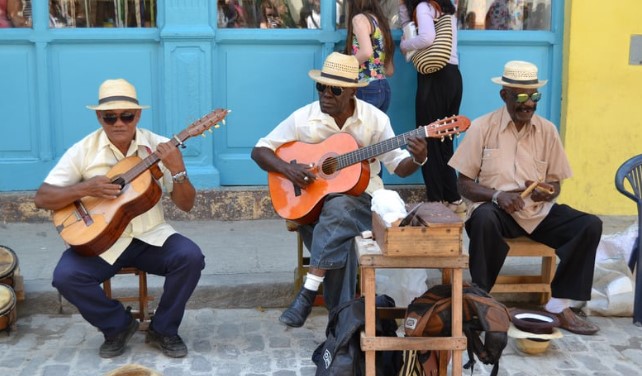
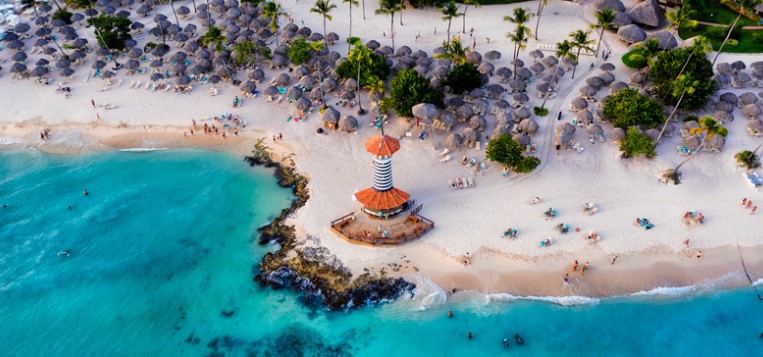
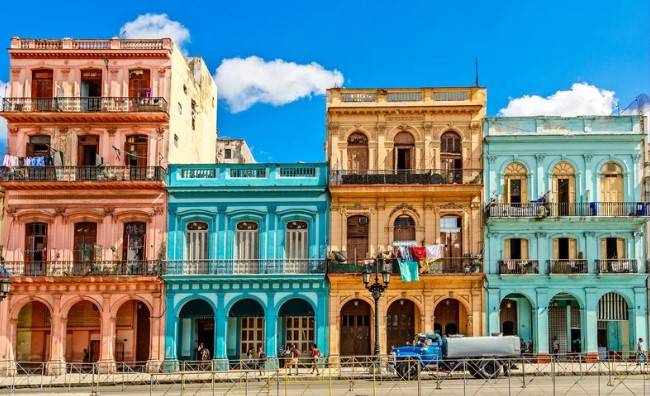
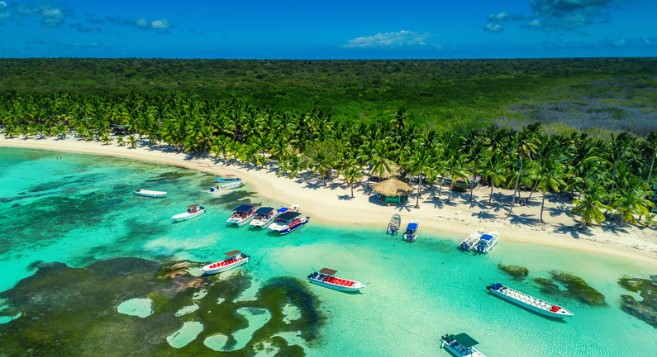
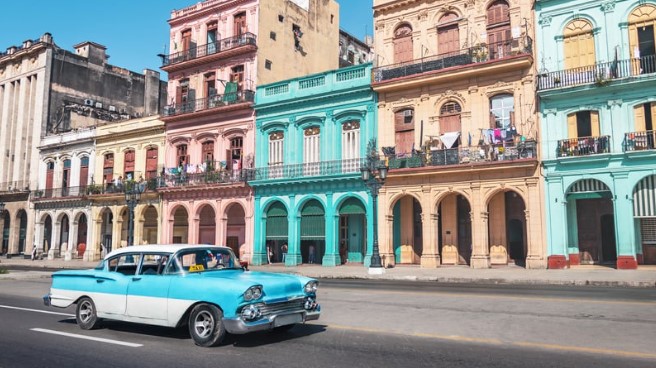
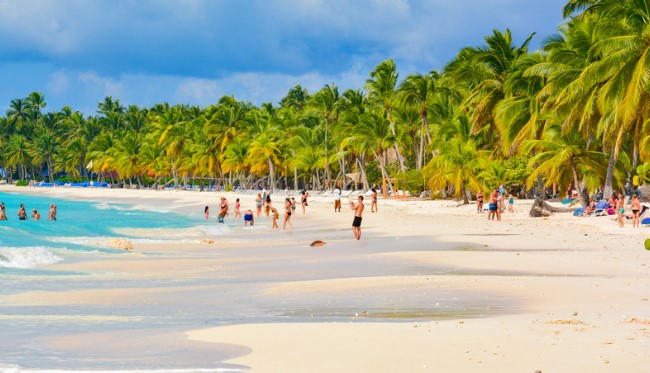

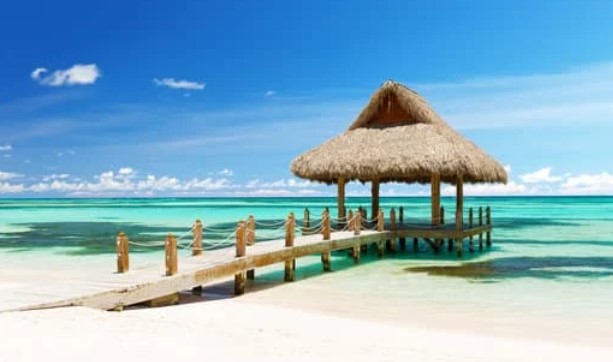
Pingback: Santo Domingo vs Punta Cana: Comparing Top Destinations